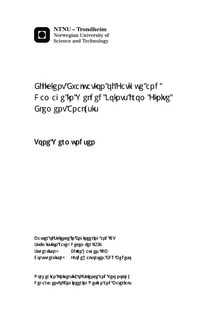Efficient Evaluation of Fatigue and Damage in Welded Joints from Finite Element Analysis
Master thesis
Permanent lenke
http://hdl.handle.net/11250/2350204Utgivelsesdato
2014Metadata
Vis full innførselSamlinger
Sammendrag
Fatigue analysis with non-linear loading conditions, such as wind and waves, is a complicated process that require thoroughly groundwork of the structural design. For such structures, weld lines in joints are particular hard to assess.
Two of today's practices of fatigue analysis are done according to DNVGL-RP-C203 (high cycle region) and DNV-RP-C208 (low cycle region). The recommended practices are hard to automate, and when done manually most likely inaccurate.
This thesis will provide a study of the processes described in both recommended practices, and start to present a solution to automate the processes of doing fatigue calculations, by creating extensions for the engineering simulation software ANSYS. The DNV Fatigue Toolbar presented provides tools for evaluating fatigue in base material and joints in both the high and low cycle region.
DNV Fatigue Toolbar is divided into main categories Screening Plane Plated Weld Tubular Joint
where Screening evaluates fatigue in the base materials and provide guidance to which weld lines need further assessment by giving un-extrapolated values at weld hot spots. When critical weld lines are identified by the help of the screening tools, Plane Plated Weld or Tubular Joint can be applied to assess hot spot fatigue through extrapolation.
The solutions provided in DNV Fatigue Toolbar is a start of implementing fatigue evaluations according to DNVGL-RP-C203 and DNV-RP-C208. Further development, especially on the Tubular Joint, is encouraged and what this implies can be found in chapter 7.
